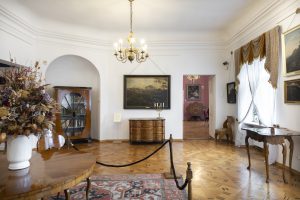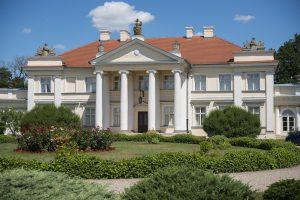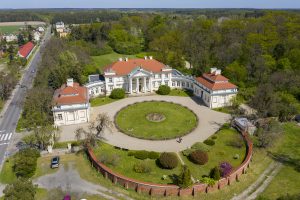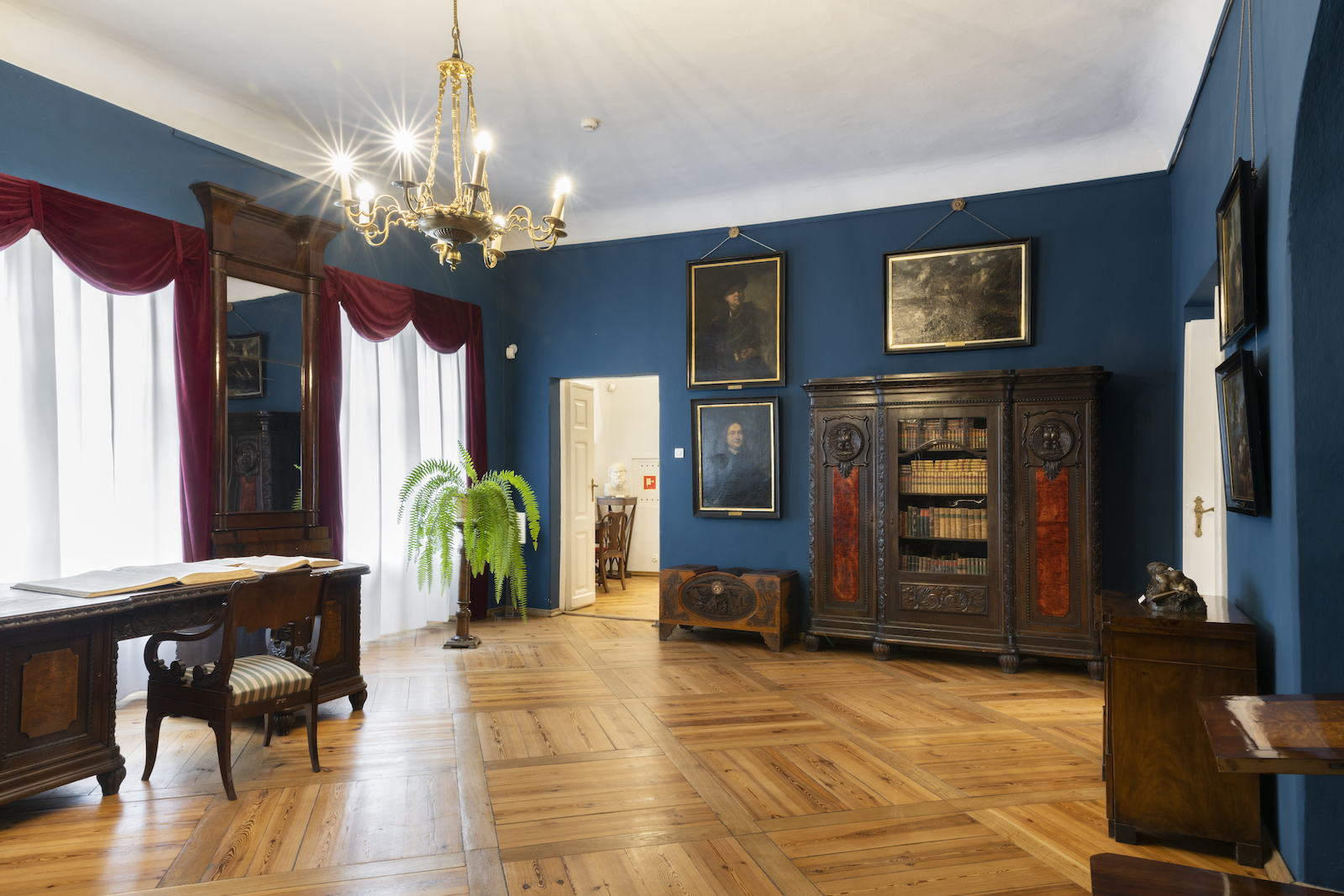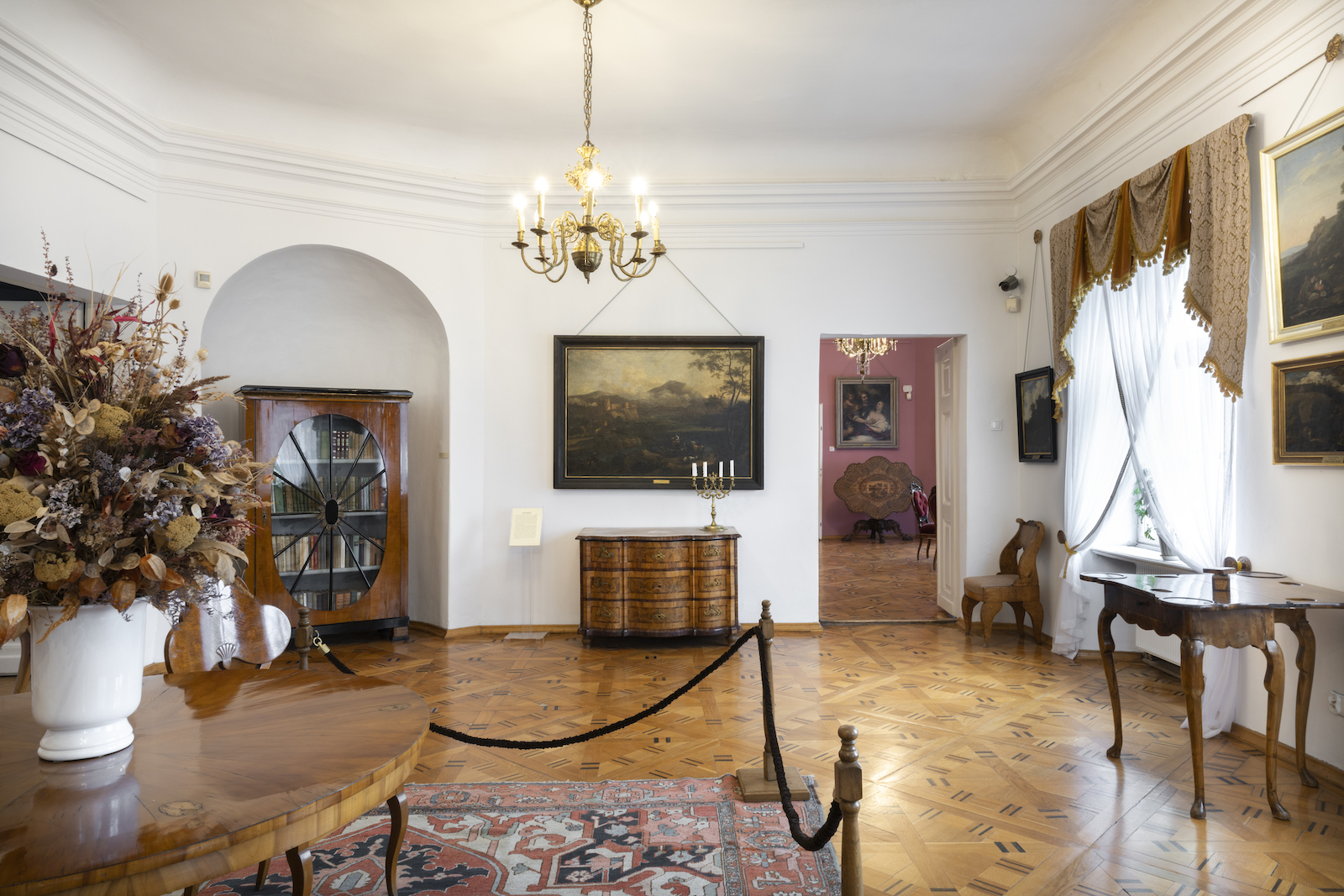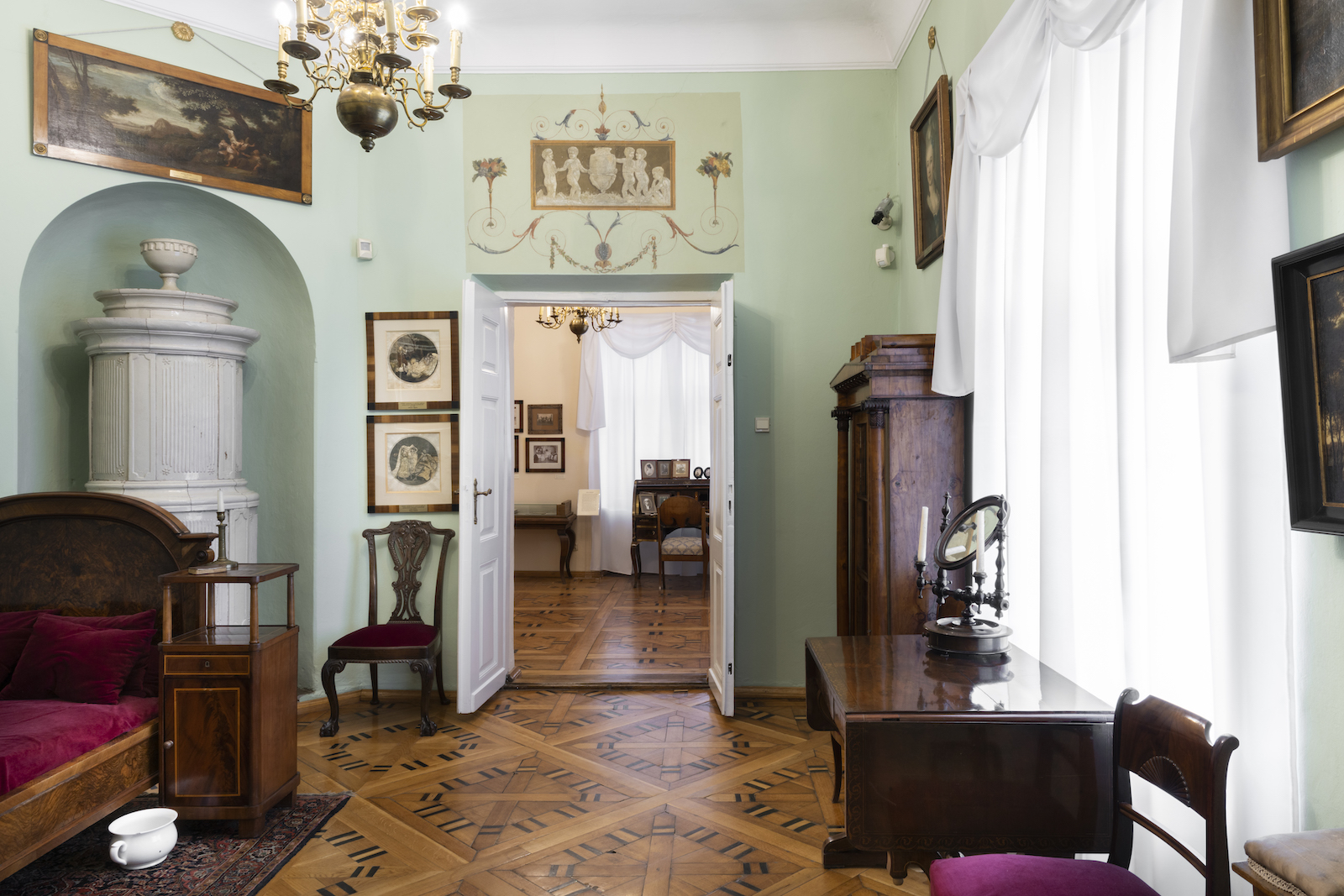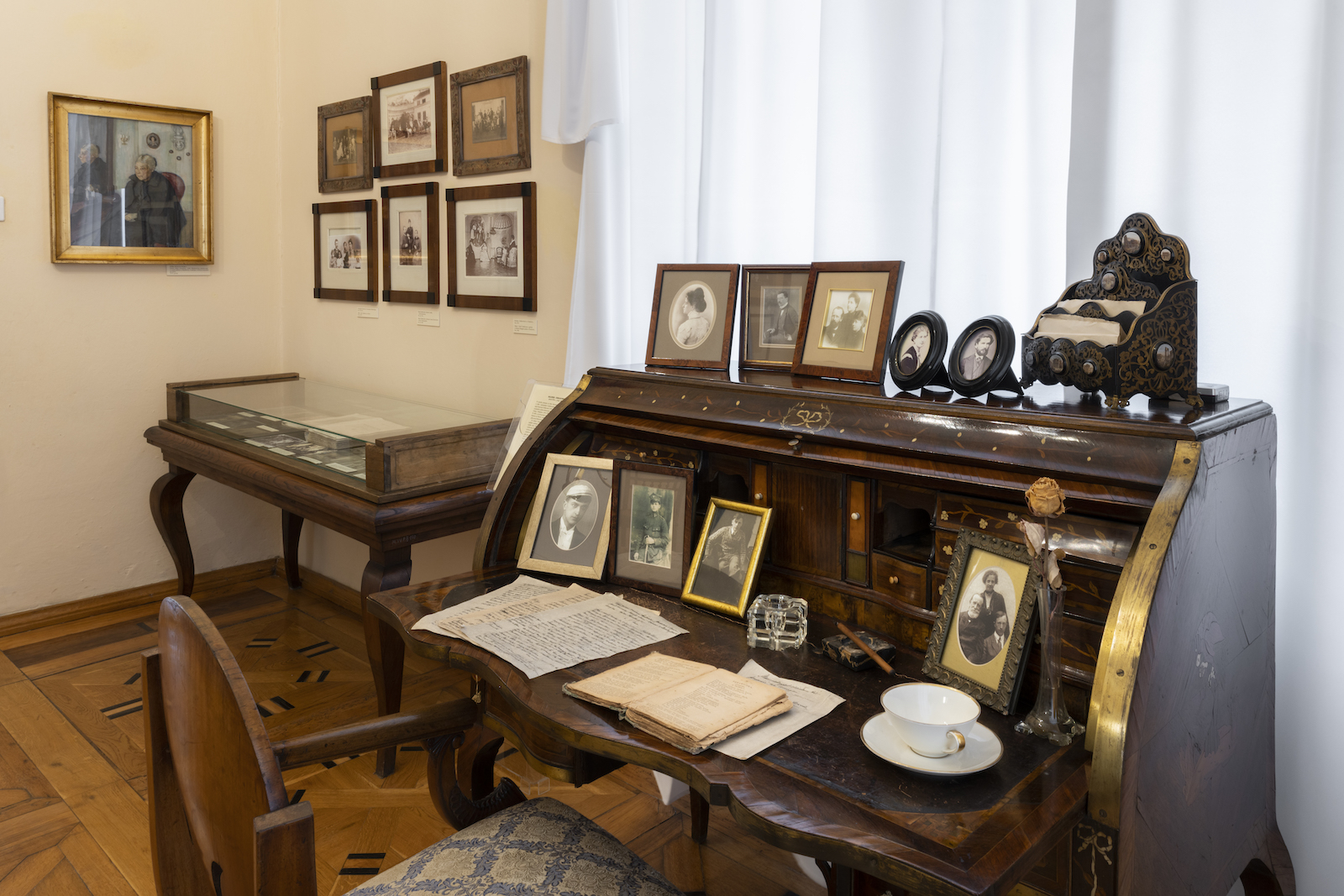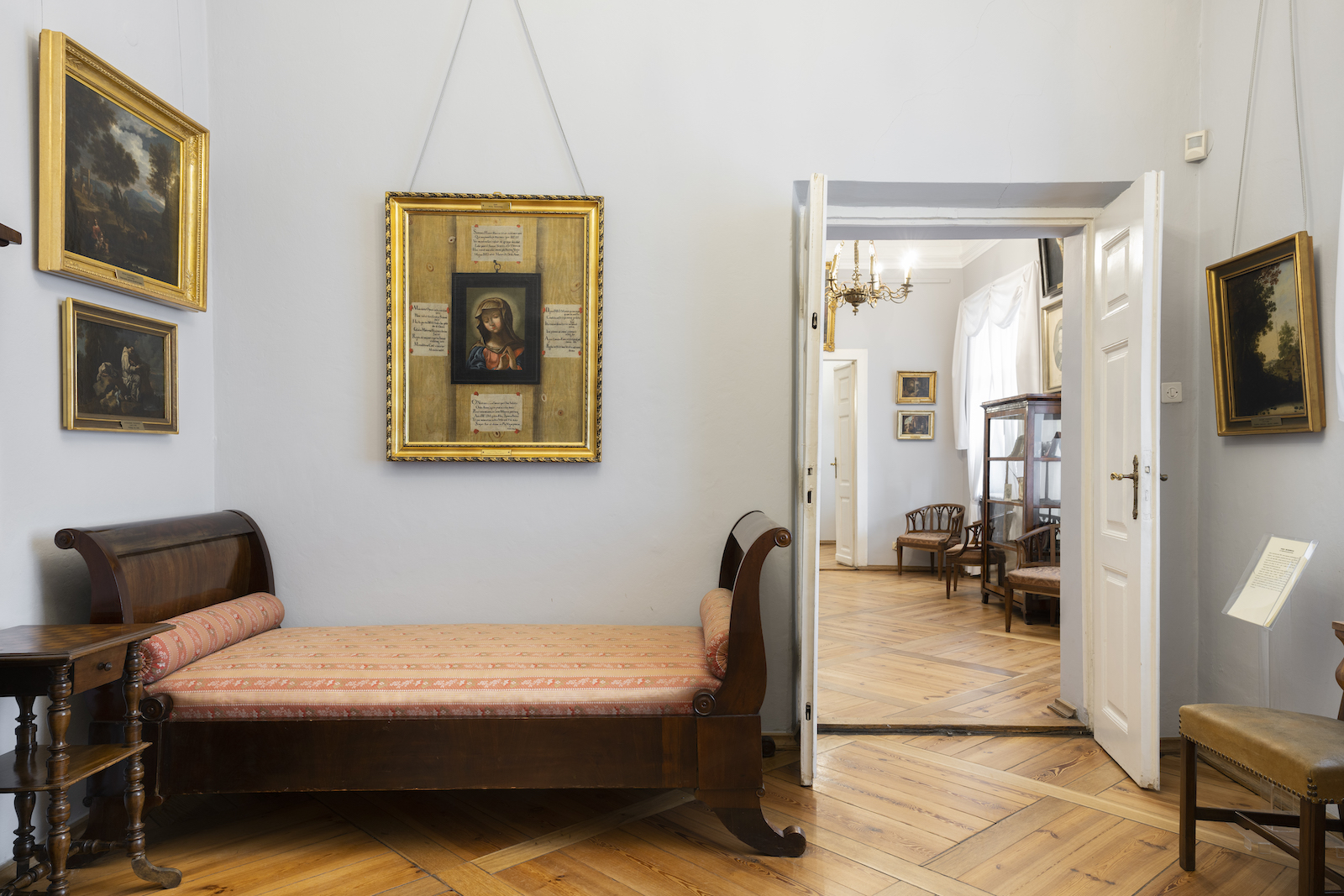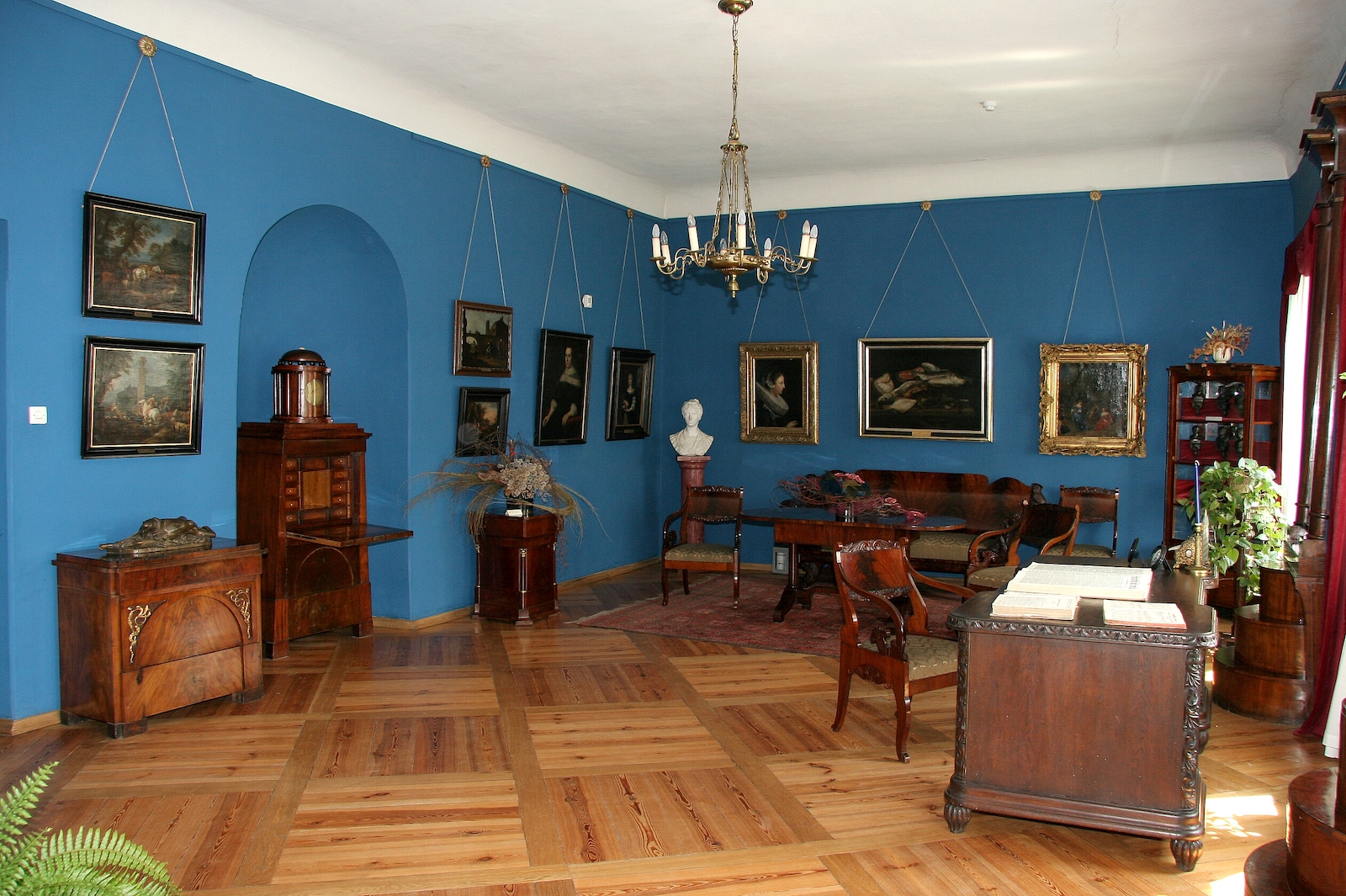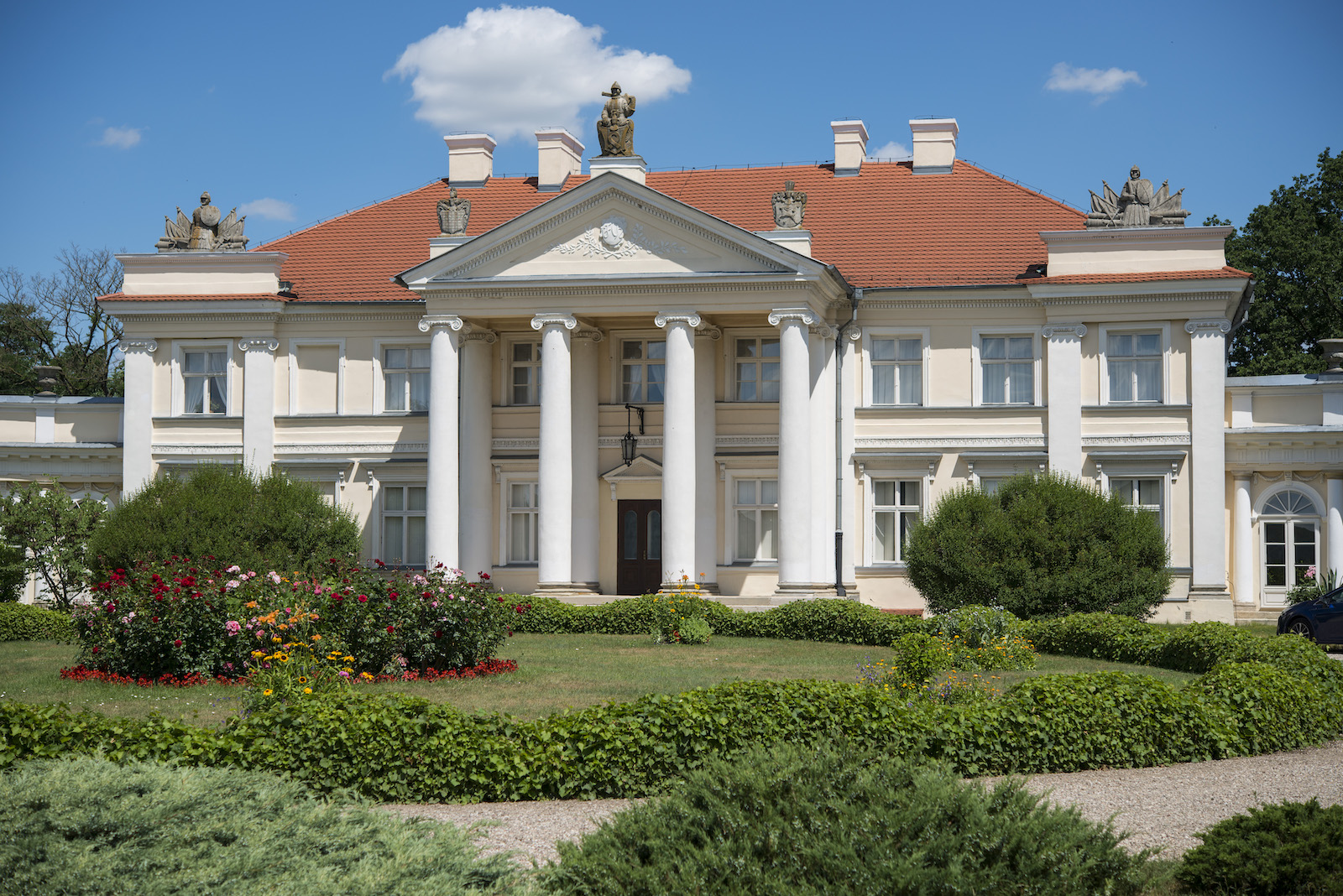Adam Mickiewicz Museum in Śmiełów – the only one in Poland dedicated to the national bard – is located in a classicist palace from the end of the 18th century, one of the pearls of Polish architecture. It is the work of the outstanding architect Stanisław Zawadzki, the creator of residences in Dobrzyca and Lubostron. Built on a horseshoe plan, it has a monumental Ionic portico, Neopalladian arcaded galleries, ornate panoplies and characteristic outbuildings with broken roofs, so-called Krakow ones. The stuccowork decorating the palace was made by Michał Ceptowski, and the frescoes in the palace interiors – by the brothers Antoni and Franciszek Smuglewicz, who brought the echoes of antiquity and classicism to the Greater Poland province.
The northern and eastern part of the manor house is surrounded by nearly 14 hectares of a landscaped garden, a miniature of an English park. The Śmiełowski Palace stands out for its composition, as it is situated in a very charming place, and the architect made full use of the beauty of its location. It is located in the centre of the Żerków-Czeszewo region, surrounded by hills and small elevations, forming an exceptionally picturesque viewpoint.
By 1784, Śmiełów was part of the Zerkowski estate and shared its fate, after which it was acquired by Andrzej Gorzeński of the Nałęcz coat of arms, President of the Appeal Court for the Grand Duchy of Poznan. At his initiative, a palace and a set of farm buildings were built, architecturally referring to the residential complex. After Andrzej’s death, the estate was inherited by his son, Hieronim, who, as a Napoleon officer, took part in the march to Moscow. After returning to Śmiełów, he and his wife took over the management of the estate. He also took up conspiratorial activity.
At the time, lying on the border between Russia and Prussia, the seat became a center of patriotic smuggling, and during the November Uprising, a place for the transfer of volunteers to the Kingdom. In mid-August 1831, Adam Mickiewicz stopped here, carrying letters from the Polish Embassy in Paris to the National Government.
During his three-week stay at the Gorzeński estate he performed under the assumed name of Adam Mühla and as a supposed cousin of the owners and teacher of their sons. He tried to get to the border village of Komorze to join the uprising, but faced with the imminent defeat, he decided to return. In Śmiełów he received news of the fall of the Warsaw defense, which is associated with the story of an oak tree that the poet planted in the park on that day, uttering a sentence about the resurrection of Poland. Growing until the 1920s, the tree, surrounded by a special cult, became a symbol of hope.
Staying in Śmiełów was associated with the birth of a passionate romance with the owner’s sister – Konstancja Łubieńska – with whom the poet later formed a friendship that lasted until the end of his life. This is where Mickiewicz had the opportunity to get to know the Greater Poland tradition, which later became a source of inspiration for the poet, reflected in many threads and themes of Pan Tadeusz transferred to the national epic, which he learned during his nine-month stay in the Duchy. In Śmiełów itself and its surroundings, inspirations were born from the nearby Jankielówka inn, hunting with pointers, or the wonderful description of Arcyserwis.
In 1886, Franciszek Chełkowski purchased a declining estate at an auction. His son Józef, with his wife Maria of Donimirskis, developed it into a place of reverence for the poet, and in 1931 built a monument in the park to Mickiewicz. As a place steeped in reverence for the poet, Śmiełów attracted many eminent people from the world of culture, politics and the clergy. Among them were: Henryk Sienkiewicz, Ignacy Jan Paderewski, Maria Gorecka – Mickiewicz’s daughter, Ludomir Różycki, Wojciech Kossak, Władysław Tatarkiewicz, General Józef Haller and the Primate Edmund Dalbor.
In 1939, the Nazis interned the owners of Śmiełów and seized their property. After the war, the palace was nationalized, its furnishings were looted and its interior was partially destroyed. For the next quarter of a century, the building was converted into a school and housing for state farms’ employees. In 1970, the building was taken over by the National Museum in Poznań, which after renovation adapted it to a museum combining Mickiewicz-related themes with a residential one. Today, the interior has been arranged in a style from around 1830. It is filled with numerous memorabilia related to the life and work of Mickiewicz, as well as to Juliusz Słowacki, Cyprian Kamil Norwid, and the Chełkowski family.



